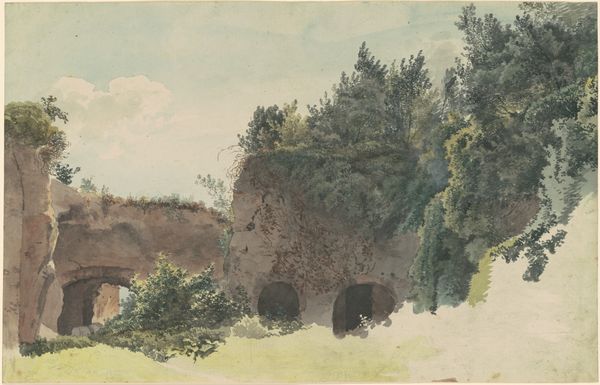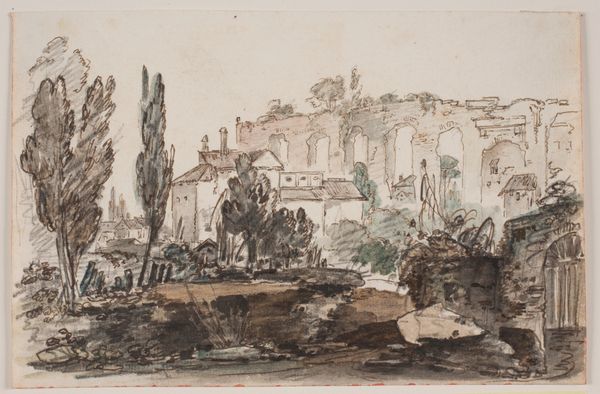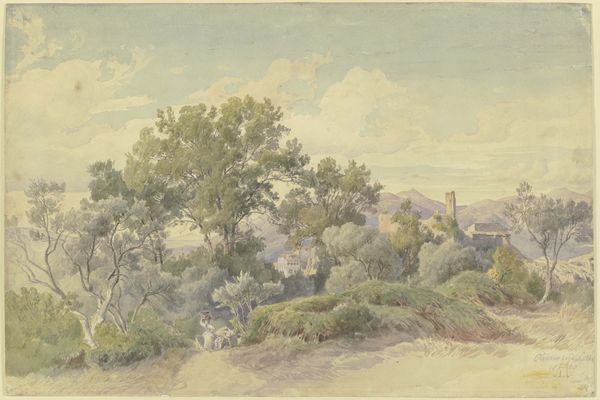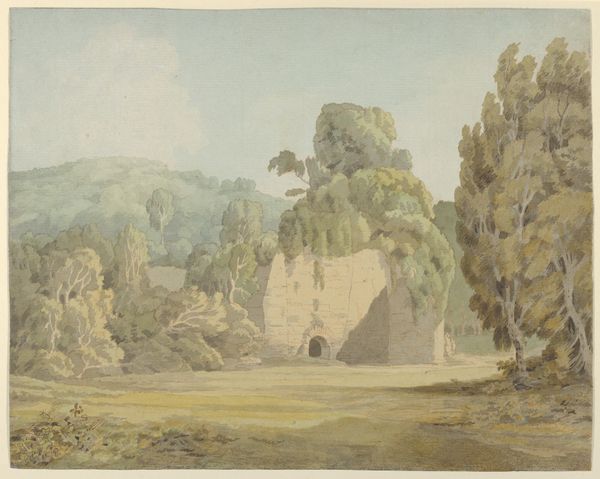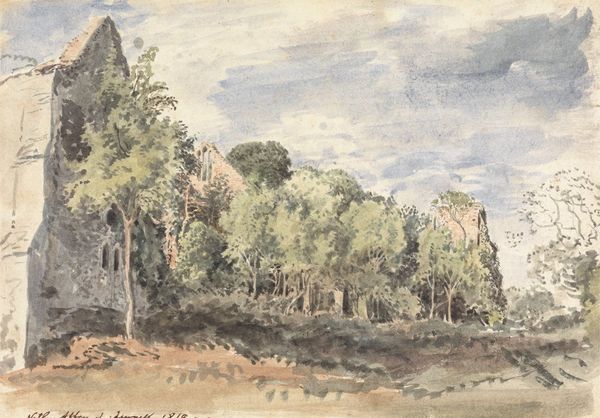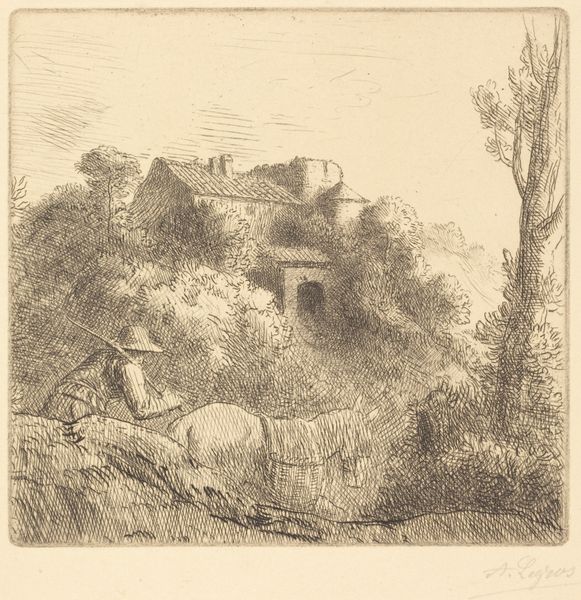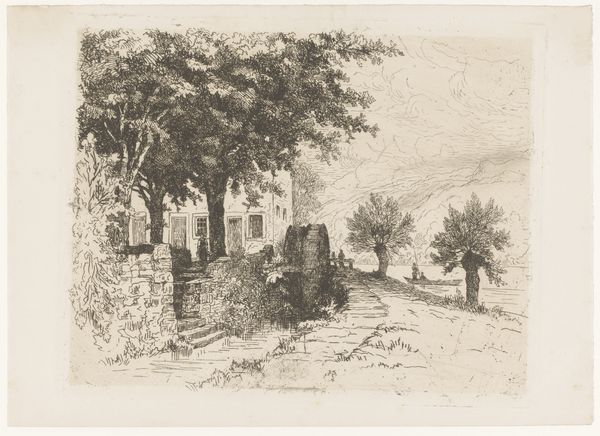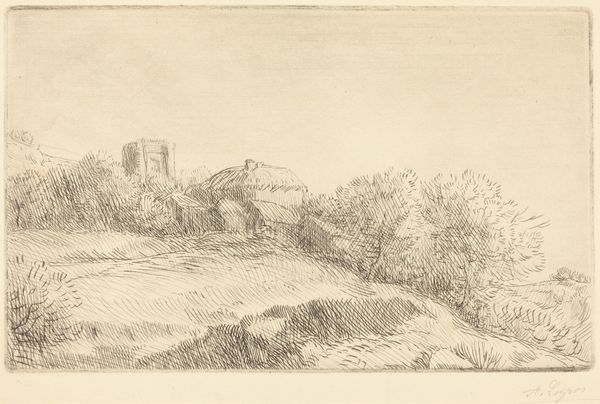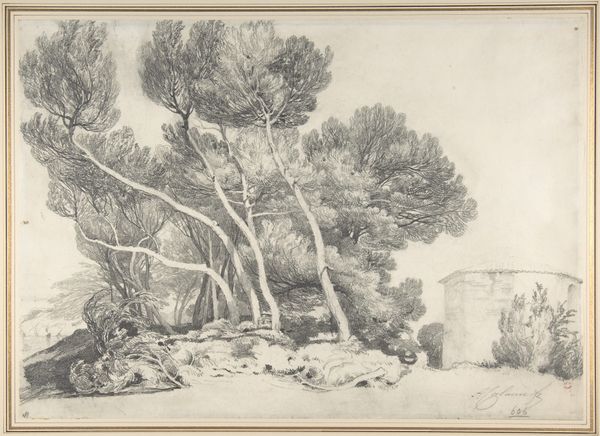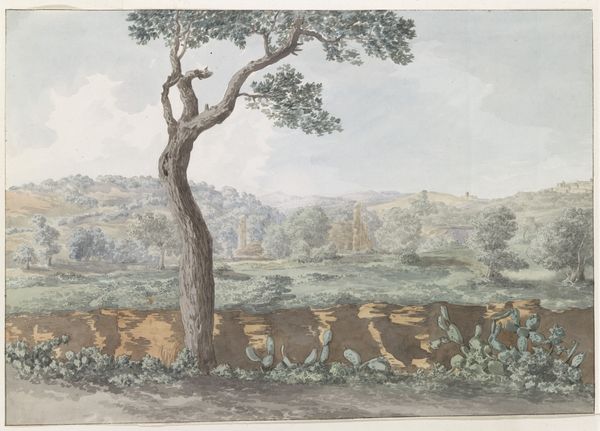
drawing, tempera, plein-air, watercolor
#
drawing
#
tempera
#
plein-air
#
landscape
#
impressionist landscape
#
watercolor
#
watercolour illustration
#
italian-renaissance
#
italy
#
botanical art
#
watercolor
Dimensions: 14 9/16 x 21 in. (36.99 x 53.34 cm) (sight)22 1/2 x 28 5/16 in. (57.15 x 71.91 cm) (outer frame)
Copyright: Public Domain
Curator: Carlo Labruzzi's "Landscape with Trees," dating back to the 18th or 19th century, presents a seemingly straightforward vista. Editor: There’s an undeniable melancholy to it. The ruined structure gives it such a somber yet tranquil vibe. It evokes reflections on power, decay, and ultimately, nature's relentless reclamation. Curator: Observe how Labruzzi masterfully uses tempera and watercolor to render depth and texture, and you notice the ruins are strategically positioned to lead the viewer’s eye deep into the landscape itself. The subtle layering creates a sense of spatial complexity. Editor: And doesn't that deliberate construction contrast starkly with the wild, overgrown vegetation? This period coincided with growing societal unrest throughout Europe. The deliberate decaying architecture and renaissance movement, within an artwork created in this setting suggests something darker than purely "botanical art". What message do you think Labruzzi had at the time? Curator: It could simply demonstrate a formal concern with balance and contrast! The red-brick texture and arched doorway disrupt the softer, more amorphous quality of the verdant vegetation; his calculated organization of pictorial space, the delicate layering of watercolors that allows light to permeate and shape, speaks volumes about his command of technique. Editor: Technique yes, but let’s also consider who these landscapes were created for. Was Labruzzi showing us a picturesque vision of the Italian countryside, sanitized from the realities of poverty and political strife of the working class at the time? Whose land is this really? What stories of ownership and labour are intentionally excluded from this 'pleasant' scene? Curator: It's definitely possible that the "silence" from figures is just that – silence. As for the artist, their formal manipulation of depth, light, and form remain compelling to this day; there's a timeless quality to that organization that speaks across generations. Editor: Agreed, yet let’s continue to broaden what we consider when we encounter artwork like this, in particular when thinking of context as related to landscapes that intentionally erase and ignore class division.
Comments
No comments
Be the first to comment and join the conversation on the ultimate creative platform.
